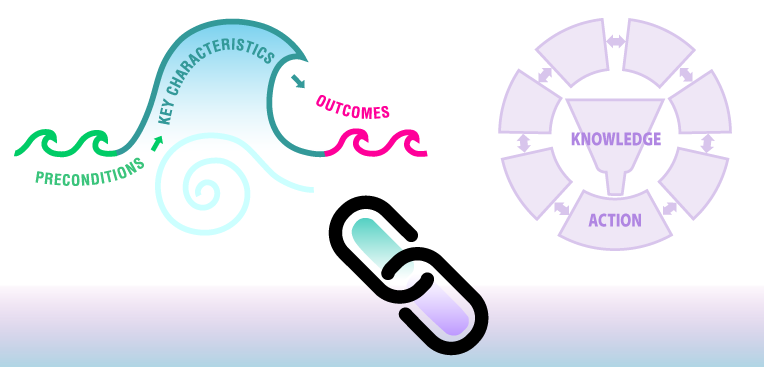

Linking this phase to the elements of the Social Movement Action Framework
You and your change team’s capacity in the ‘Assessing barriers and facilitators of knowledge use’ phase may be enhanced and/or accelerated by the addition of some of the elements of the Social Movement Action (SMA) Framework, as the two frameworks are complementary and together accelerate change uptake and sustainability. In addition to the linking example described earlier in this section, there can be many other points of connection between the two frameworks. Below are three more examples for your consideration:
- Change is valued: When the identified problem or shared concern is seen as valued by health-care providers, patients/persons and their families, and other stakeholders in the local context, it acts as a positive driver for change.
- Emerging leadership: In social movements, emerging leaders are opinion leaders and influencers of change, often seen as key facilitators and mobilizers. Identifying emerging leaders and assessing these leaders’ impact on your implementation can help you determine whether they can be helpful to your change initiative.
- Collective identity: The assessment of facilitators and barriers can also include the presence or absence of a collective identity. Identifying the presence and meaning of collective identity and assessing its impact on your implementation can be helpful for change teams to determine whether it acts as a facilitator or barrier.
For more discussion about the dynamic links between the elements of the SMA Framework to the KTA Framework, see the section ‘Accelerate your success with the Leading Change Toolkit™’.
Getting ready for the next phase: Once you have identified the barriers and facilitators, the next phase, select, tailor, and implement interventions, can help identify strategies that you can use to address barriers or leverage facilitators. The number and type of strategies you use depend on the barriers and facilitators you identified in your context. Careful planning is strongly recommended to ensure that strategies can be applied effectively.
